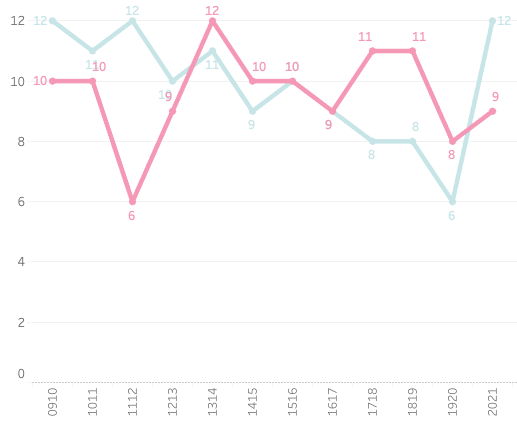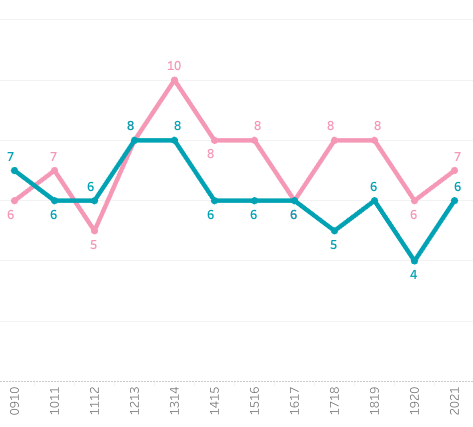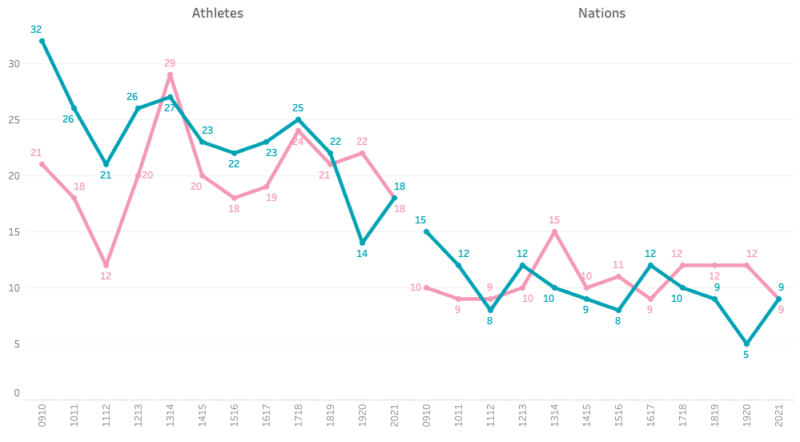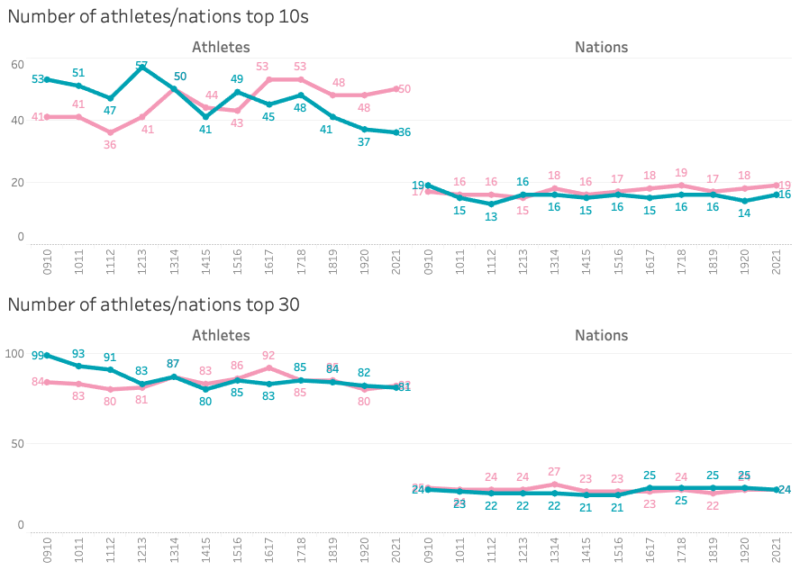In the 2019-2020 season, there were six men who won one or more biathlon races. Six. No wonder some people called the sport of biathlon predictable. But the current season looked promising when we reached six halfway through the season. And that trend continued right until the end with another new winner in the last weekend in Hofer.
This analysis looks at how many athletes and nations were represented in the winners’ category for both men and women, the top 3, top 10 and top 30 and how it lined up against previous years.
Winners
Last season, all 21 wins were divided between J.T. Boe (10), Fourcade (7), Doll, Fillon Maillet, Jacquelin and Loginov (all one). It was fair to say the winner somewhat predictable. This years’ season however saw 12 winners in 27 events, including the likes of Dale, Desthieux, Hofer, Ponsiluoma, Samuelsson and Laegreid, with the latter winning seven. Perhaps it is unfair to compare 21 to 27 races in a season, but the previous seasons also only saw eight, nine or ten winners in 24, 26, 26 and 25 races respectively.

For the women, unfortunately, the trend has continued to go down, although we did have one additional athlete winning, but again in more races than last year. New winners were Alimbekava, Hauser, Davidova and Tandrevold. But with Eckhoff winning 505 of the races (13 out of 26), getting to nine was still pretty good.

When we look at the different Nations amongst the winners, the trends, in general, are still going downwards or at least are staying fairly low. Although Norwegian dominance is impressive, it would be good for the sport if there were more challengers from different Nations as well. Of the 53 races, Norway won 33 of them. The next Nation on that list was France with eight.

Gold, Silver and Bronze
When looking at all three podium places, we see a similar picture. The men had more athletes than last season, but for both men and women, the long term trend is going downward. The number of Nation represented on the podium has been stable and sits around nine.

Top 10’s and Top 30’s
When we make the pool of athletes even larger by looking at the Top 10 and Top 30 results, we see the male athletes are slightly declining. the women however are fairly stable (Top 30’s) and even increasing somewhat (top 10’s). On the Nations side both men and women are quite stable with Top 10’s between 19 and 14, and Top 30’s around 24.

Athletes and Nations in summary
When looking at athletes and Nations representing the top places in biathlon we see some promising increases for the athletes, but a somewhat concerning image for the Nations. Hopefully we can see in the next couple of years that other Nations like Belarus, Canada, USA, Austria, Switzerland and Check Republic (and China?) can close the gap and challenge typical biathlon Nations Like Norway, France, Germany, Italy, Sweden and Russia.
If you want to check the charts interactively you can find it on my Tableau Public page.